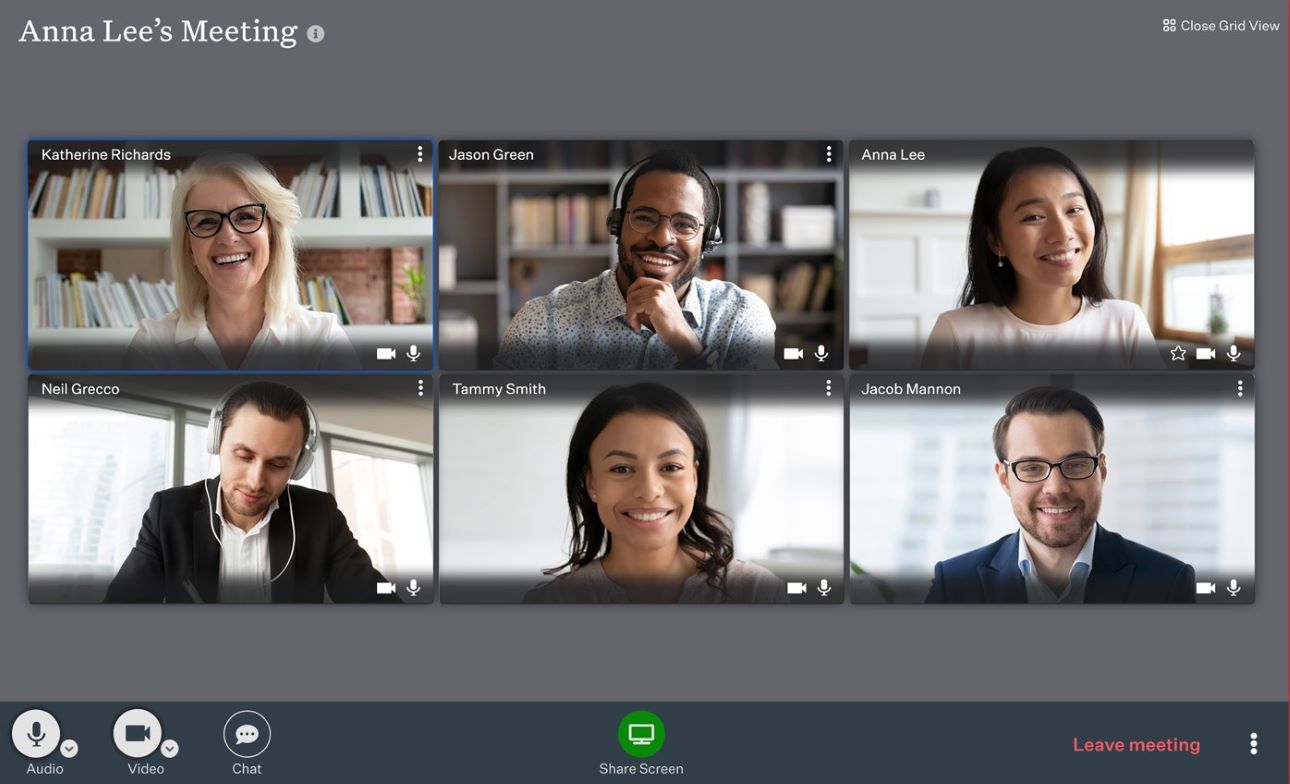The good, the bad and the future of business videoconferencing

Since the pandemic, videoconferencing has become essential. From telling people they’re on mute to juggling between platforms, we’ve all racked up plenty of experience. That’s why it’s an opportune time to look at the benefits, pitfalls and the future of videoconferencing.
The good
While the benefits of videoconferencing may have been augmented by the pandemic, there are a lot of good things it brings that we believe will stay even if everyone returns to the office full time.
Maintains connections no matter the location
Can you imagine a world where everyone has to be in the same location to have an important meeting? You may have co-workers spread out across your city, state, country or even the world, but videoconferencing lets everyone get together easily.
And more importantly, it lets you do more together. You could always hop on an audio conference call, but videoconferencing platforms like Ooma Meetings adds the ability to see each other, share your screen or even drop links and other files into chat.
This allows everyone to contribute to a meeting seamlessly. If someone is giving a presentation, other employees can find and add referenced links, post questions or share comments for all, or only a select few, to see.
And of course, video lets you see your co-workers and whether they’re engaged in the discussion you’re having. You’ll be able to read their expressions and get a better sense of what people are thinking. It’s certainly better than dead silence on an audio call and wondering whether someone got disconnected.
If you’re a larger business with remote employees, videoconferencing lets your employees get together easier. You no longer have to worry about booking large venues for company-wide meetings, and your employees don’t have to worry about booking meeting rooms or arranging space for a meeting. Even if you’re not large, you still get to make your employees’ lives easier. Parents, for example, could attend meetings from home so that they avoid the rush hour hassle of picking up their kids from school or daycare.
Increases productivity and efficiency
The beauty of videoconferencing is that it opens up meeting scheduling options. You can attend from anywhere you get an internet connection, which means someone on a sales trip can still attend and participate.
It also lets you cut down on wasted time. You can jump from a meeting directly into work without skipping a beat, cutting down on time moving between spaces in your workplace. And sure, you can even jump out of bed and dive right into a meeting—though we don’t recommend that.
Sharing your screen also lets people easily see what you’re working on and give you feedback. This means you don’t have to pass a document around back and forth; you can get together virtually and just have at it until the work is done.
Gives your team options
We already touched on this, but embracing videoconferencing means you can embrace remote work. That appeals not only to your employees who like working from home, but also allows you to branch out and hire employees who may not live where your business is based.
Adds fun to your meetings
Nobody likes a boring meeting. Organizers of video meetings have the option to create some fun with visuals and activities. For example, using different virtual backgrounds adds variety to the experience. If employees are unclear how to use this feature, the organizer can demonstrate it. Alternatively, playing a simple game like “two truths and a lie” adds a dash of fun to the meeting and helps with team building.
The bad
So what doesn’t work well? Let’s take a look.
Network and technology issues
Stable high-speed internet, up-to-date computers, cell phones, and external devices such as microphones and video cameras, are all critical for a smooth videoconferencing experience. Because some participatints are remote, it becomes more challenging to resolve technical issues. Attendees, who may not be technically savvy, are often unable to quickly fix issues. Sure, the company IT staff can troubleshoot at a distance, but the meeting may be over before they can rectify the situation. It can also take time for employees to get up to speed with the operation of videoconferencing software.
Personal interaction shortfalls
In-person meetings convey subtle body language that may not be visible in a small video frame. There are also challenges when there are many participants. Keeping up with the video images from several different people can overwhelm you and cause you to miss some of the important communication. See our article on overcoming Zoom fatigue for further insight.
Potential security challenges
Some videoconferencing systems have been the subject of hacking attacks that seek to gain information from the meetings. That can be a potential challenge that isn’t typically present for audio calls. Most videoconferencing software now has safeguards in place to make sure only authorized attendees can join meetings.
As you consider the benefits outlined above along with the shortcomings, it’s a good idea to consider what you can do to improve your meetings right now. See our article 10 Ways To Achieve Better Video Conference Calls as a thought starter.
Videoconferencing improvements for the future
Watch for significant improvements in video quality with ultra-high-definition resolution, more powerful computers and enhanced conferencing software.
Software developers will also continue to enhance the user interface and flexibility of operation. That will further open up videoconferencing for the technology-challenged employees in our midst, making sure everyone is connected to this important tool.
Emerging features in videoconferencing like automatic transcription and translation offer intriguing benefits. With a full meeting transcript, you may be able to eliminate the need to take notes. Attendees can then focus on interaction with each other. As translation becomes more widely available, it will be easier to pursue global opportunities and collaborate with customers and colleagues who speak different languages without having to seek out translation support.
Videoconferencing is clearly here to stay. It’s become an essential element of our business communications tools. If you’re looking for options for business videoconferencing software, be sure to explore Ooma Meetings.

Learn more about how Ooma Office can help your business.
Thank you!
An Ooma Office Sales Representative will be in touch shortly.
866-573-0707


Learn more about how Ooma Office can help your business.
Just call 877-621-0515 or click this to CHAT. Or, fill out this form and someone will reach out to you shortly.



